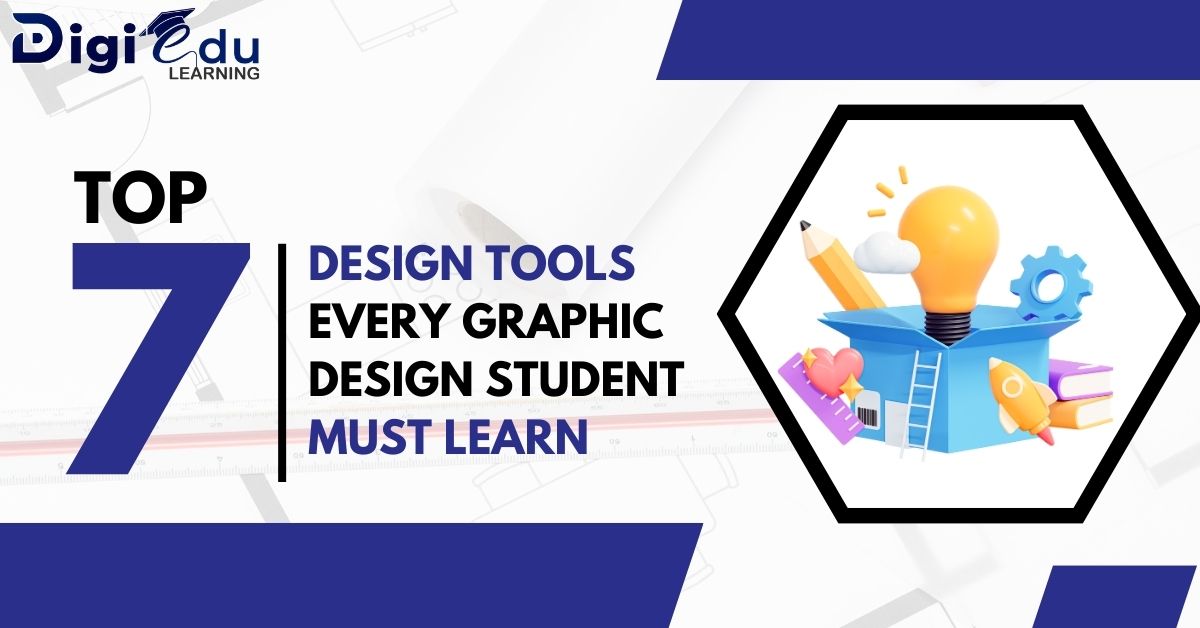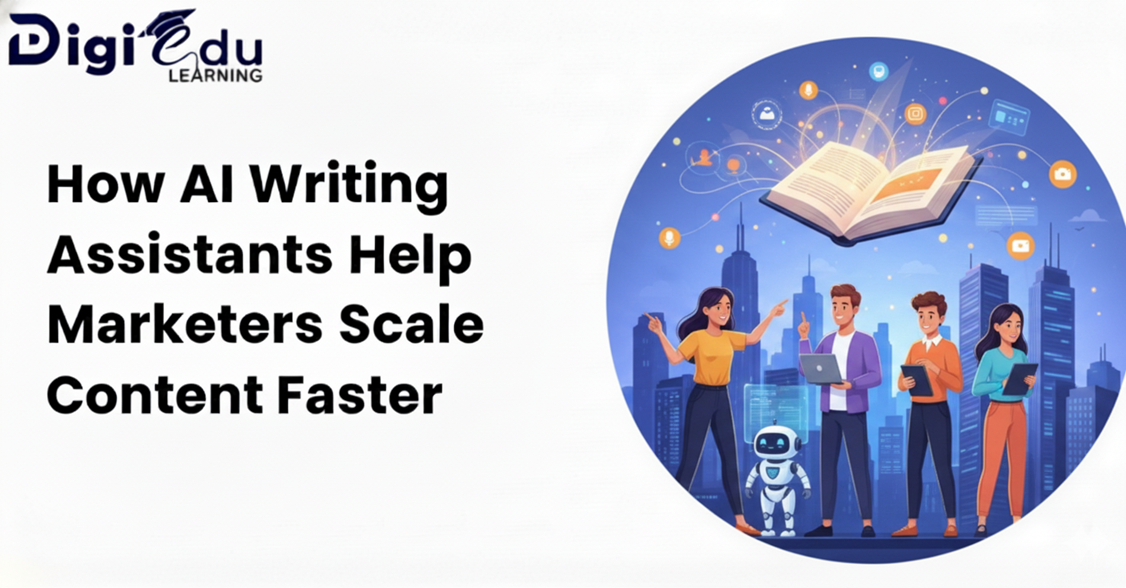Top 7 Design Tools Every Graphic Design Student Must Learn

The Evolving Landscape of Graphic Design Tools
Graphic design is no longer limited to Photoshop, Illustrator, or Canva. While these platforms dominate the mainstream, the industry has moved to the wider ecosystem of special, AI-operated, and associate tools. In 2025, employers are rapidly interested in students who can bring something new to the table, and only knowing normal platforms may not be enough. To stay ahead of the curve, students must familiarize themselves with innovative and long-term design devices that add creativity, automation, and technical adaptability. Mastery in these platforms not only brings variety in a designer’s skill set but also increases career opportunities in branding, UI/UX, motion design, and digital marketing.
Why Students Should Look Beyond Popular Platforms
Graphic Design Tools such as Canva and Adobe are essential, but design education today needs to go deep into top platforms, solving specific challenges. Many startups and agencies now rely on AI-based software to cut production time and increase creative workflows. Customers expect rapid results, data-driven design options, and multimedia versatility, which means designers equipped with unique equipment will stand out. The goal is not to leave the traditional design foundation, but rather to complement it with devices that push the boundaries and show adaptability.

1. Kittl: The Hidden Gem for Typography and Branding
Typography and logo construction often intimidate beginners, but make the Kittl process both comfortable and professional. Unlike Canva, which focuses on the drag-and-drop template, Kittl allows advanced text manipulation and high-quality vector-based results. The stage is gaining popularity among branding experts as it bridges the gap between simplicity and professional-grade design. Graphic design students who aspire to work in brand identity can greatly benefit from mastery in Kittl, especially since employers often look for candidates who can produce unique typography rather than repeated template-based scenes.
2. Runway ML: Redefining Motion Design with AI
Video and motion graphics are becoming essential parts of digital marketing, and the Runway ML is one of the most revolutionary devices in this space. While the effect remains an industry standard, the runway ML AI-operated video editing, background removal, and real-time impact generation introduces generation. This allows designers with minimal video expertise to create professional animations and visual effects that require hours of manual effort. For students, Runway ML Learning means adding motion design to their portfolio without the need to be a full-nimer, which makes their skills far more versatile.
3. Vectornator: The Illustrator Alternative You Shouldn’t Ignore
Adobe Illustrator is powerful, but also expensive, and not every student can access it. The Vectornator is a device that offers professional-grade vector design capabilities for free, making it a favorite among upcoming designers. It has characteristics such as auto-looking, advanced typography control, and an infinite artboard, which allows students to practice logo construction, images, and infographics without Illustrator’s steep learning curve. Employers who look at the vector in a student’s portfolio recognize both resource and adaptability, two qualities that are highly valuable in a modern design career.
4. Spline: The Future of 3D Design for Beginners
The three-dimensional design is no longer a niche skill- in web experiences, marketing campaigns, and even product design. Spline is a browser-based 3D design tool that allows students to create interactive scenes without advanced technical knowledge. From 3D typography to product mockup, the Spline provides an entry point in a skill that will define the future of design. While Blender and Cinema 4D industry remains veteran, the simplicity of the slate makes the perfect for students to detect 3D, without being overwhelmed. Since businesses use rapid immersive experiences, knowledge of expansion can give students an edge in interviews and freelance opportunities.
5. Gravit Designer: Cross-Platform Flexibility for Modern Designers
Design students often quarrel over laptops, tablets, and phones, and Gravit Designer provides uninterrupted design functionality on devices. Unlike heavyweight software, which demands high processing power, Gravit designers are light, yet the vector illustration, prototype, and even print design are capable. Its biggest advantage is accessibility – students can work on projects from anywhere without relying on expensive hardware. In a job market where distance cooperation is becoming an ideal, familiarity with Gravit Designer can demonstrate a student’s ability to adapt to different workflows.
6. Khroma: AI-Powered Color Palette Inspiration
Color theory is one of the most complicated aspects of design for beginners, and Khroma is an AI-manual device that simplifies it. By analyzing the preferences of a student, Khroma produces endless color combinations that work harmoniously together. Although it may look simple, it is a game-changer for brand design, web design, and advertising campaigns where color psychology plays an important role. Employers often test designers on their ability to make blind balanced palettes, and students who use Khroma produce professional-grade color systems rapidly and more effectively than those who rely only on estimates.
7. Artbreeder: Expanding Creativity with Generative Art
Generative designs are one of the most exciting trends in creative industries, and ArtBreeder is a platform that allows designers to experiment with AI-launched scenes. By combining and modifying the existing images, students can produce real art, unique character concepts, or experimental backgrounds that separate their portfolio. While the Artbreeder core design cannot change the tool, it displays a student’s ability to detect creativity beyond traditional boundaries. In 2025, employers value this practical mentality as it shows that the designer is ready to adapt to the AI-powered changes in the industry.
Preparing for the Future with the Right Toolset
In 2025, graphic design students cannot rely on a size-fit-all approach. Employers expect a mixture of creativity, technical skills, and adaptability. By learning tools such as Kittl, Runway ML, Vectornator, Spline, Gravit Designer, Khroma, and Artbreeder, students can give themselves a position in the form of forward-thinking professionals who bring more than just template-driven designs to the table. These devices not only help to create an impressive portfolio, but also prepare students for real-world landscapes, where the time limit is tight and creativity needs to be both sharp and impressive.

Conclusion: Standing Out in a Competitive Market
The future of graphic design belongs to those who are willing to go beyond the obvious. While Canva and Adobe remain essential, relying solely on them limits a student’s growth. Employers are constantly on the lookout for designers who bring fresh perspectives, experiment with technology, and adapt to industry trends. By mastering a diverse toolkit of lesser-known yet powerful design platforms, students can demonstrate initiative, versatility, and innovation—qualities that set them apart in a crowded job market. The design world of 2025 is about embracing both tradition and innovation, and the right set of tools is the bridge between the two.







Leave a Reply